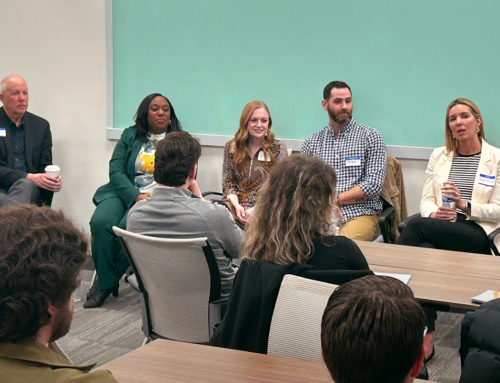It has always been critical for nonprofits to communicate their value proposition. But in the current environment — marked by political and social division, economic uncertainty and widespread funding cuts — communicating effectively is more essential, and trickier, than ever.
As executive teams at nonprofits continue to navigate the changing landscape, the foundation of great communication should never falter. You must continue to be inclusive, informative and solution-focused, and your messaging must be authentic and transparent first and foremost.
In addition to adhering to those foundational guidelines, here are three ways to hone your nonprofit communications strategy for these challenging times:
Remember the two-way street
It’s important to deeply understand your various stakeholder groups, from donors to partners, service recipients to elected officials, and other key collaborators. You’re not just communicating at them or to them, you’re communicating with them.
Do you have a firm handle on what matters most to them, why they engage with your organization and how they’re hoping to see services or opportunities advance? Are you clear on what’s keeping them up at night, where their pain points are and what feels like progress for them?
Explore opportunities to learn more — opportunities that go far beyond an annual survey. Use all available data to refine not just what you message, but also the cadence, format, engagement style and more. Your conversations and research may reveal that they want more how-to stories or fewer executive thought leadership pieces. Open rates and engagement data may make it clear that an email newsletter isn’t a fit or that social posts featuring those who have been helped by your services are a sure way to hold attention.
Consider additional options that honor the two-way street that is nonprofit communication. These can include Q&A or “Ask Me Anything” sessions (with supporters, donors, service recipients and, yes, sometimes with your nonprofit leaders); webinars; simple online surveys or polls; behind-the-scenes tours or events; educational workshops; networking opportunities; needs assessments and analyses; community meetings; and regular, brief conversations in various formats, from phone calls to coffee meetings and more.
Refine the message
As the nonprofit landscape evolves, so should nonprofits’ messaging. Armed with the information and priorities gleaned from ongoing and strategic two-way communication, refine your messaging to better connect. A few things to consider:
- Tap the data: Studies have found that while many nonprofits do in fact collect and analyze various types of data, far fewer of them tap the power of that data in their messaging. Information is power, and targeted data can give weight to your storytelling, appeals for support, efforts to attract partners and many more essential communications. Data lets you get specific (“Your donation helped us provide full backpacks for 500 students in 23 districts”) while also conveying the big picture (“National news reports show a 10% increase in children going to bed hungry. Right here in our own back yard, we are part of that stark reality: Our latest research found that 1 in 5 children in our four-county region face the same challenge.”)
- Bring in visuals: It’s no secret that we’ve become an incredibly visual society. Words will always be powerful. Data will always be powerful. But they’re made more powerful with visuals. Prioritize great photos, impactful and short videos, powerful charts and breakouts, alternative storytelling formats such as graphics and sketches, and other visual tools.
- Switch up the formats: Sometimes a longform thought leadership piece is the right tool. Other times, a simple quote displayed in a powerful design is better. A direct ask for support may be the best approach for one campaign, while a nuanced storytelling series may be better for another. There are lots of ways to tell your story, convey your message and interact with your stakeholders — first-person point-of-views, Q&As, Top 10 lists, Do’s and Don’ts charts, how-to infographics, short donor videos, and so on. Experiment to see what delivers.
Rely on your advocates
As you refine your communications strategy, don’t forget to rely on your best advocates — those who already believe in your cause, donate to your campaigns, use your services — to help you tell your story, including:
- Your own staff — are your team members passionate, empowered and educated on how to help share the story, in a way that aligns with your brand?
- Donors
- Those who benefit from/use your services
- Partner organizations
- Other nonprofits and nonprofit industry leaders, associations, trade media and advocates
- Elected officials and other decision-makers
- Your corporate partners and donors — have they been fully tapped to share your story, or are they simply being seen as behind-the-scenes funders?
- Key media outlets
- Influencers with reach in your area, whether local standouts or national advocates with big platforms and an interest in the areas you impact
- Relevant faith leaders, educators, community organizers and other people of influence
Effectively mobilizing your advocates may require a bit of work — using the data and prior engagement to identify the right people, gaining permission and buy-in, and perhaps providing behind-the-scenes access or easy-to-share content — but it can have a big payoff.
Don’t lose hope
It’s a trying time for nonprofits. Rethinking your communications — by remembering the two-way street, refining the message and relying on your advocates — can give you an advantage as you continue the tough work of meeting society’s complex needs.








